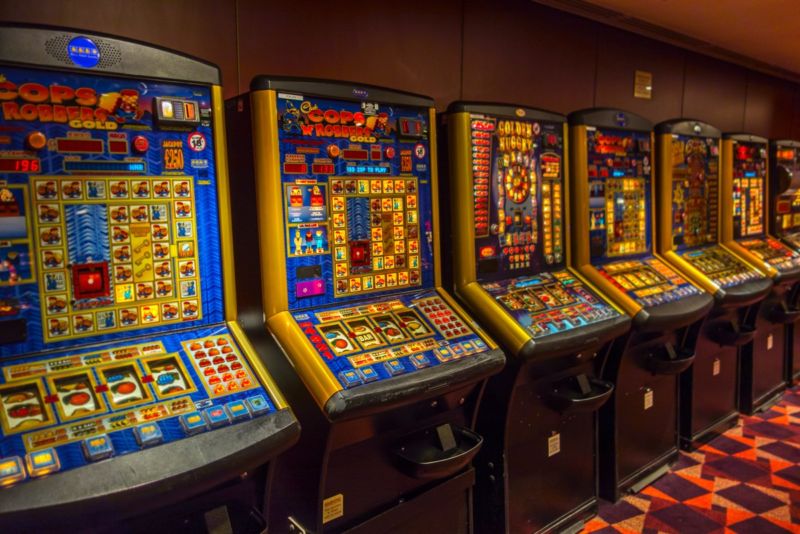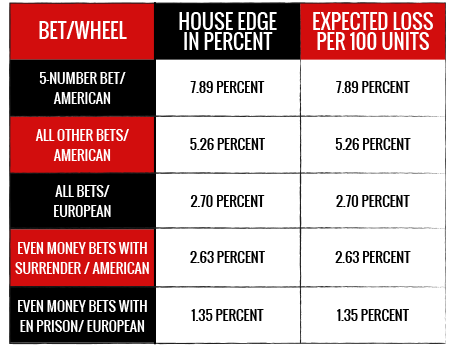Casino House Advantage
In any casino game, the house advantage is what percentage of the money the establishment takes, on average, of your wagers. The lower the house edge, the better the chances of winning in the long run, and the longer you'll be able to play on a starting bankroll. If you want to understand the Baccarat house edge, then you need to understand that the standardized rules of the Baccarat game aren't always follows to a tee, so there is some variation in how these numbers work. However, if you know how and why these values come out like they do, then you can find yourself in a better position to try to win at this game.
The Baccarat House Edge for Common Bets
The three most common bets in this game are the banker, player and tie wagers. Most games use an eight-deck shoe, and this means that the house edge on the banker bet is 1.06%, which is the lowest of any bet in the game. The player bet comes in at 1.24%, a respectable level, but the tie wager has a house advantage of a whooping 14.36%. As you can see, this lends itself to a basic strategy of focusing on the player and house bets and staying away from the tie.
The house has an advantage in blackjack simply because the player has to draw first and if he busts, the player automatically losses regardless if the dealer subsequently busts in the same round. This is the casino's solitary advantage in blackjack and if everything were equal, the house edge in blackjack would be about 8 percent. House Edge% tells you what advantage, or vig., or house edge the casino has. The bigger the number the worse the bet is. The bigger the number the worse the bet is. Generally speaking, anything over 3% should not be played as this will diminish your chances of winning in the medium-long term to virtually nothi ng. The house edge for baccarat does depend on how many decks of cards the house uses and we’ll compare them both in this article. What you should also remember is that nearly every casino has a 5% commission on all winning bets on the banker. GROUP 4: GOOD PLAYERS ACTUALLY CAN HAVE AN ADVANTAGE AT THESE GAMES. POKER (very difficult) Although often found in casinos, you are not playing against the casino when you play poker. You are playing against the other players and the house takes a small percentage of the pots (the rake) as their fee for providing the game. The house edge, the odds advantage in its favor, represents the average gross profit the casino can reliably expect to make from each game. On the games with the lowest house edge, the smallest.
Many games also allow wagering on whether the player or banker will be given a pair on the first two cards. In an eight-deck game, the Baccarat house edge on either of these bets is 10.36%, which is also substantially higher than the banker or player options. With that having been said, it can actually turn out a lot worse if you're playing in a game with a slightly different format, and that's what we're going to look at here.
Single-Deck House Advantage Issues
Games that are dealt with a single deck are more and more popular, and it's something that changes the house advantage on all four of the popular bets. It lowers the Baccarat house edge on the banker bet a little to 1.01%, and it increases it slightly on the player bet to 1.29%. The tie bet increases slightly as well to 15.75%. With all of that having been said, it shoots the pair bet to incredible levels with an overwhelming 29.41% house advantage. This is so high because it's so relatively easy to make pairs with a single deck of cards.

Card Counting Mechanics
Card counting is something that's applied to a lot of games, and the whole point for this game is that it tells you what the house advantage is like based on the cards left in the deck. When certain cards leave the deck, that increases the value of the player bet and decreases the value of the banker bet. Other cards leaving the deck have the opposite effect. The idea is that the Baccarat house edge for the banker and player bets can actually switch so that the player bet is the stronger of the two.
Wiki Tips: It takes a lot of practice and work to be able to count cards on this level, but it's important to realize that the mechanics of this technique are all about keeping up with what you think the house advantage is like based on what cards have been dealt and which ones remain in the deck.
Try Our Best Casinos
Lab Casino
Planet Casino
Slots Capital Casino
Spin Casino
Calculation of Casino House Edge
The house edge (HE) is defined as the casino profit expressed as a percentage of the player's original bet.
The player's disadvantage is a result of the casino not paying winning wagers according to the game's 'true odds,' which are the payouts expected considering the odds of a wager either winning or losing.
The house edge of casino games vary greatly with the game. House edges for slot machines and Keno may be up to 15% and 25% respectively.
In games which have a skill element, such as Blackjack or Spanish 21, the house edge is defined as the house advantage from optimal play (without the use of advanced techniques such as card counting), on the first hand of the shoe (container holding the cards).
Lowest Casino House Advantage
The set of the optimal plays for all possible hands is known as 'basic strategy' and is highly dependent on the specific rules, and even the number of decks used. Good Blackjack and Spanish 21 games have house edges below 0.5%.
Example #1:
Calculate the house edge for American Roulette, which contains two zeros and 36 non-zero numbers (18 red and 18 black).
Solution #1:If a player bets $1 on red, his/her chances of winning $1 is 18/38 since 18 red numbers exist out of 38. However, his/her chance of losing $1 (i.e., winning −$1) is 20/38. Therefore, the expected value may be calculted as follows:
Expected Value = (1)(18/38) + (−1)(20/38)
Expected Value = 18/38 − 20/38
Expected Value = − 2/38 = − 1/19
Expected Value = −5.26%
Therefore, the house edge is 5.26%.
Example #2:
Calculate the house edge for European Roulette, which contain a single zero and 36 non-zero numbers (18 red and 18 black).
If a player bets $1 on red, his/her chances of winning $1 is 18/37 since 18 red numbers exist out of 37. However, his/her chance of losing $1 (i.e., winning −$1) is 19/37. Therefore, the expected value may be calculted as follows:
Expected Value = (1)(18/37) + (−1)(19/37)
Expected Value = 18/37 −
 19/37
19/37Expected Value = −1/37
Expected Value = −2.7%


Casino Game With Least House Advantage
Therefore, the house edge is 2.7%.Example #3:
Casino Blackjack House Advantage
Calculate the house edge for a game played by wagering on a number from the roll of a single die with a payout of four times the amount wagered for a winning number.
Since the probability of a winning number for a single roll of a die is 1/6, it follows the game has 5 to 1 odds. However, with a payout of only four times the amount wagered (i.e., 4 to 1) for a winning number, the house edge may be calculated as follows:
House Edge = (true odds − payout odds) / (true odds + 1)
House Edge = (5 − 4)/(5 + 1)
House Edge = 1/6
House Edge ≈ 16.67%